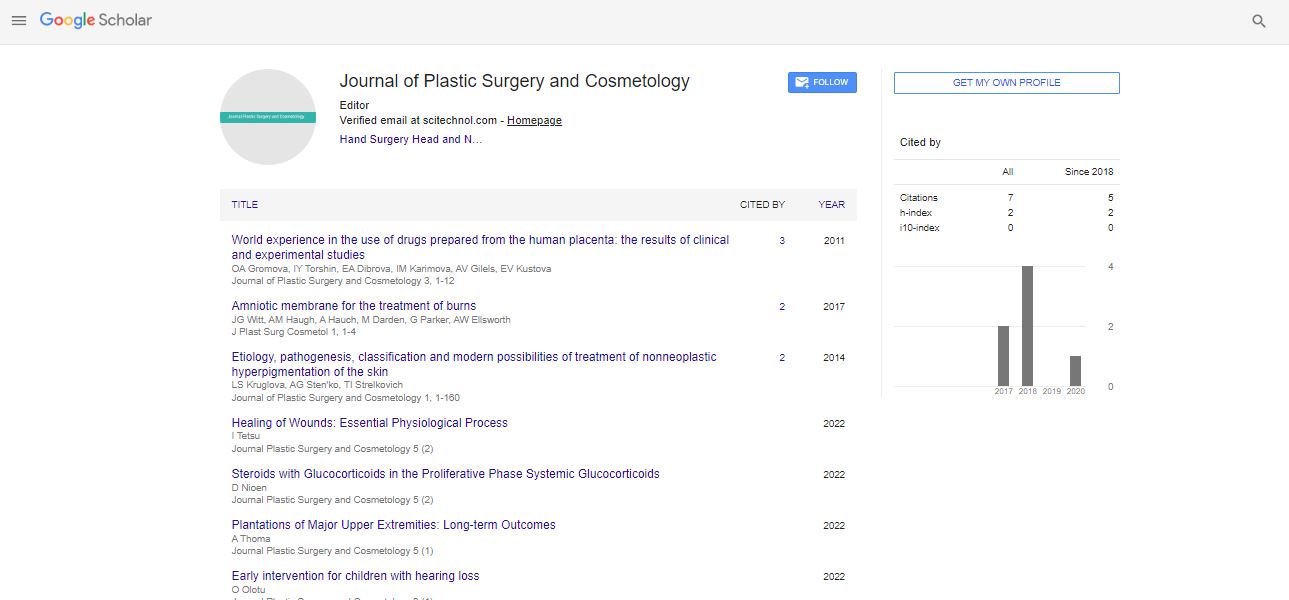Population-based health utility assessment of pediatric facial port-wine stain
Alyssa Heiser and Oon T. Tan
Harvard Medical School, USA
: J Plast Surg Cosmetol
Abstract
Background: Birthmarks in newborns are common sources of parental concern. Port-wine stains (PWSs), common vascular birthmarks of infancy that lack any tendency to spontaneously involute, arise in the head and neck region and grow proportionally with age. If left untreated, PWSs can become hypertrophic and develop nodules, resulting in marked residual facial deformity. Since the face is intimately associated with personal identity and social interactions, the distinct appearance of PWSs may have profound psychosocial impact on affected individuals. Herein, we assessed the perceived burden of pediatric facial port-wine stain (PWS) among a sample of naïve observers. Methods: Naïve observers completed an internet-based utility questionnaire consisting of visual analogue scale (VAS), standard gamble (SG), and time trade-off (TTO) techniques. Health states were presented using still facial photographs and descriptions of monocular blindness, binocular blindness, and pediatric facial PWS. Utility scores were compared using one-way ANOVA with post hoc Scheffe’s test. Regression analysis was performed using observer age, sex, race/ethnicity, education, income, and marital status as independent predictors of each of the utility scores. Results: Among the 262 participants included in our analysis (mean [SD] age, 31.6 [13.5] years; 126 women [48.1%]; 131 men [50.0%]; 5 unknown [1.9%]), VAS, SG, and TTO scores (mean ± SD) for pediatric facial port-wine stain (0.70 ï?± 0.24, 0.85 ï?± 0.22, 0.86 ï?± 0.20) ranked significantly higher than those of binocular blindness (0.51 ï?± 0.26, 0.72 ï?± 0.27, 0.69 ï?± 0.27; p<0.001), while approaching scores of monocular blindness (0.73 ï?± 0.21, 0.86 ï?± 0.21, 0.87 ï?± 0.18). Variables associated with lower SG and TTO utility scores included observer age (p<0.05) and non-Caucasian race (p<0.01). Conclusion(s): Pediatric facial PWS significantly decreases health utility and is comparable to living with monocular blindness as assessed among naïve observers. The results of this study indicate that observers associate pediatric facial PWS with aesthetic and functional impairment and would choose early intervention versus observation alone.
Biography
Alyssa Heiser is currently a fourth-year medical student at the Larner College of Medicine. She conducts research focused on quality-of-life outcomes in patients with vascular anomalies, particularly port-wine stains, under the direction of Oon T. Tan, MD, PhD at the Carolyn and Peter Lynch Center for Laser and Reconstructive Surgery at Massachusetts Eye and Ear / Harvard Medical School. Her research interests include medical education and mentorship, surgical and non-surgical aesthetic and quality of life outcomes, health economics, and facial plastic surgery.
 Spanish
Spanish  Chinese
Chinese  Russian
Russian  German
German  French
French  Japanese
Japanese  Portuguese
Portuguese  Hindi
Hindi 